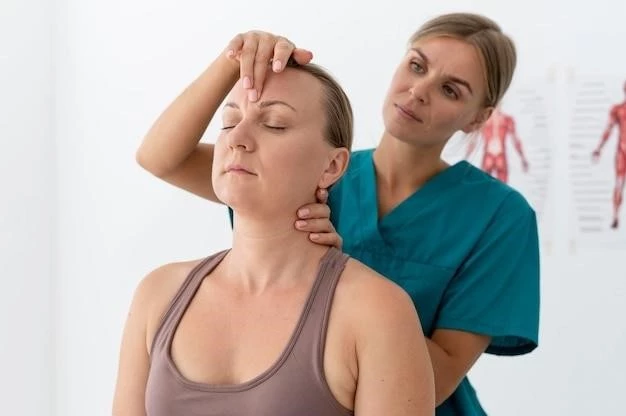Acrofacial dysostosis can be caused by genetic alterations. These mutations can disrupt normal development processes leading to the characteristic features of the condition. Early identification of specific genetic variants is crucial for accurate diagnosis and management.
Genetic Mutations
Genetic mutations associated with acrofacial dysostosis may impact key developmental pathways involved in craniofacial and limb formation. These mutations can affect signaling molecules, transcription factors, or structural proteins crucial for normal embryonic development. Understanding the specific genetic changes involved is essential for providing personalized care and genetic counseling to affected individuals and families.
Environmental Factors
While genetic mutations play a significant role in acrofacial dysostosis, certain environmental factors can also contribute to the development of the condition. Exposure to teratogenic substances during pregnancy, maternal health conditions, and environmental toxins are examples of factors that may impact fetal development and increase the risk of acrofacial dysostosis. Understanding and minimizing these environmental influences are important considerations in the prevention and management of this rare disorder.
The Palagonia Type Disease is characterized by distinct craniofacial abnormalities, including abnormal skull shape, facial asymmetry, cleft lip and palate, and dental anomalies. These features contribute to the diagnosis and management of this rare condition.
Craniofacial Abnormalities
Individuals with Palagonia Type Disease may present with notable craniofacial abnormalities such as midface hypoplasia, hypertelorism, and malformations of the ears and eyes. These features can vary in severity and may impact breathing, eating, and speech. Early recognition and comprehensive evaluation of these craniofacial anomalies are essential for appropriate treatment planning and multidisciplinary care coordination.
Limb Deformities
Palagonia Type Disease can also manifest with limb deformities such as shortening or malformation of the limbs, hands, or feet. These abnormalities can impact mobility and fine motor skills. Management of limb deformities may involve orthopedic interventions, physical therapy, and assistive devices to optimize function and enhance quality of life for individuals affected by this rare condition.
Hearing Loss
Hearing loss is a common feature of Palagonia Type Disease, often resulting from structural abnormalities in the ear or inner ear dysfunction. Individuals with this condition may experience varying degrees of hearing impairment, impacting communication and social interactions. Early identification through hearing evaluations and appropriate interventions such as hearing aids or cochlear implants can significantly improve quality of life for affected individuals.
Surgical interventions play a crucial role in addressing the craniofacial and limb abnormalities associated with Acrofacial Dysostosis. Different surgical procedures may be needed to correct the deformities and improve both form and function for affected individuals.
Surgical Interventions
Surgical interventions for Acrofacial Dysostosis may involve procedures such as craniofacial reconstruction, limb lengthening, and corrective surgery for cleft lip and palate. Surgeons aim to restore functional and aesthetic aspects, enhance breathing, feeding, and speech functions, and improve overall quality of life. Close collaboration between surgical specialists, orthodontists, and other healthcare professionals is essential to achieve comprehensive care and optimal outcomes for individuals with this complex condition.
Orthodontic Treatment
Orthodontic treatment is an integral part of the comprehensive care plan for Acrofacial Dysostosis. Orthodontists play a critical role in managing dental and jaw alignment issues, optimizing occlusion, and improving oral function. Braces, expanders, and other orthodontic devices may be utilized to address malocclusions and improve overall oral health. Collaborative efforts between orthodontists, surgeons, and other healthcare providers are essential to achieve optimal outcomes and patient satisfaction.
Speech Therapy
Speech therapy is a key component of the multidisciplinary approach to treating Acrofacial Dysostosis. Speech-language pathologists work with individuals to address communication challenges, improve articulation, and enhance language skills. Therapy may focus on oral motor exercises, language development, and social communication strategies. Early intervention and ongoing speech therapy can greatly benefit individuals with this condition, promoting functional communication and participation in daily activities.
Diagnosing Palagonia Type Disease typically involves a detailed clinical evaluation by healthcare specialists.
Clinical Examination
The clinical examination for Palagonia Type Disease includes a thorough assessment of the physical features, craniofacial abnormalities, limb deformities, and associated symptoms. Healthcare providers may also evaluate developmental milestones, hearing function, and genetic factors to confirm the diagnosis. A detailed clinical examination lays the foundation for appropriate treatment planning and management strategies tailored to the individual’s unique presentation of the condition.
Genetic Testing
Genetic testing is vital in diagnosing Palagonia Type Disease, as it can identify specific mutations or chromosomal abnormalities associated with the condition. Various genetic tests, including chromosomal microarray analysis and sequencing techniques, may be used to pinpoint the underlying genetic cause. Accurate genetic testing not only confirms the diagnosis but also helps in providing tailored medical management, genetic counseling, and potential implications for family members.
Imaging Studies
Imaging studies such as X-rays, CT scans, or MRI scans play a crucial role in the diagnosis of Palagonia Type Disease. These studies help visualize structural abnormalities in the craniofacial region, limbs, and internal organs, aiding in the identification of characteristic features of the condition. Imaging findings provide valuable information for healthcare providers to formulate an accurate diagnosis and develop an appropriate management plan tailored to the individual’s specific needs.
Understanding the long-term outcomes of Acrofacial Dysostosis is crucial for comprehensive care.
Long-term Outcomes
Evaluating the long-term outcomes of individuals with Acrofacial Dysostosis involves assessing their overall health, functional abilities, and quality of life as they age. Monitoring developmental progress, addressing medical needs, and providing ongoing support are essential for optimizing long-term outcomes. Multidisciplinary care, regular follow-up evaluations, and early intervention strategies can significantly influence the quality of life and well-being of individuals living with Acrofacial Dysostosis.
Quality of Life
Assessing the quality of life of individuals with Acrofacial Dysostosis involves considering physical health, emotional well-being, social interactions, and daily functioning. Addressing pain management, access to healthcare services, psychological support, and educational opportunities are vital aspects in enhancing overall quality of life. Open communication, empowerment, and holistic care approaches contribute to improving the well-being and quality of life for individuals facing the challenges of Acrofacial Dysostosis.
Stay informed about the latest research updates on Palagonia Type Disease.
Recent Findings
Ongoing research on Palagonia Type Disease has led to recent findings related to genetic modifiers, novel treatment approaches, and potential therapeutic targets. Understanding these advancements is essential for improving diagnostic accuracy, refining treatment strategies, and enhancing outcomes for individuals affected by this rare genetic disorder. Staying abreast of the latest research findings plays a crucial role in advancing the field and offering hope for the future management of Palagonia Type Disease.
Current Studies and Trials
Various research studies and clinical trials are underway to investigate new treatment modalities, genetic mechanisms, and long-term outcomes in individuals with Palagonia Type Disease. These studies aim to expand knowledge, improve diagnostic tools, and explore targeted therapies for better management of this rare disorder. Participation in clinical trials and access to cutting-edge research initiatives are pivotal in advancing medical understanding and ultimately enhancing the care and outcomes for individuals affected by Palagonia Type Disease.
E nsure comprehensive care for Acrofacial Dysostosis through a multidisciplinary team appr
Multidisciplinary Approach
A comprehensive approach to managing Acrofacial Dysostosis involves a multidisciplinary team comprising geneticists, pediatricians, surgeons, orthodontists, speech therapists, and other specialists. This collaborative effort ensures holistic care, personalized treatment plans, and ongoing support for individuals with this rare condition. Coordinated interventions address diverse needs and optimize outcomes, emphasizing the importance of teamwork and individualized care in managing Acrofacial Dysostosis effectively.
Rehabilitation Programs
Rehabilitation programs play a vital role in the management of Acrofacial Dysostosis, focusing on physical therapy, occupational therapy, and speech-language therapy. These programs aim to improve motor skills, enhance independence, and address communication challenges. Tailored rehabilitation plans, consistent therapy sessions, and family involvement are key components in supporting individuals with Acrofacial Dysostosis to achieve their fullest potential and enhance their quality of life;
Counseling Services
Counseling services play a crucial role in providing emotional support, guidance, and coping strategies for individuals and families affected by Palagonia Type Disease. Trained counselors help address the psychosocial impact of the condition, manage stress, and enhance resilience. Counseling services also promote mental well-being, facilitate adjustment to the challenges of the condition, and foster a supportive environment for individuals to navigate the complexities of living with Acrofacial Dysostosis.

